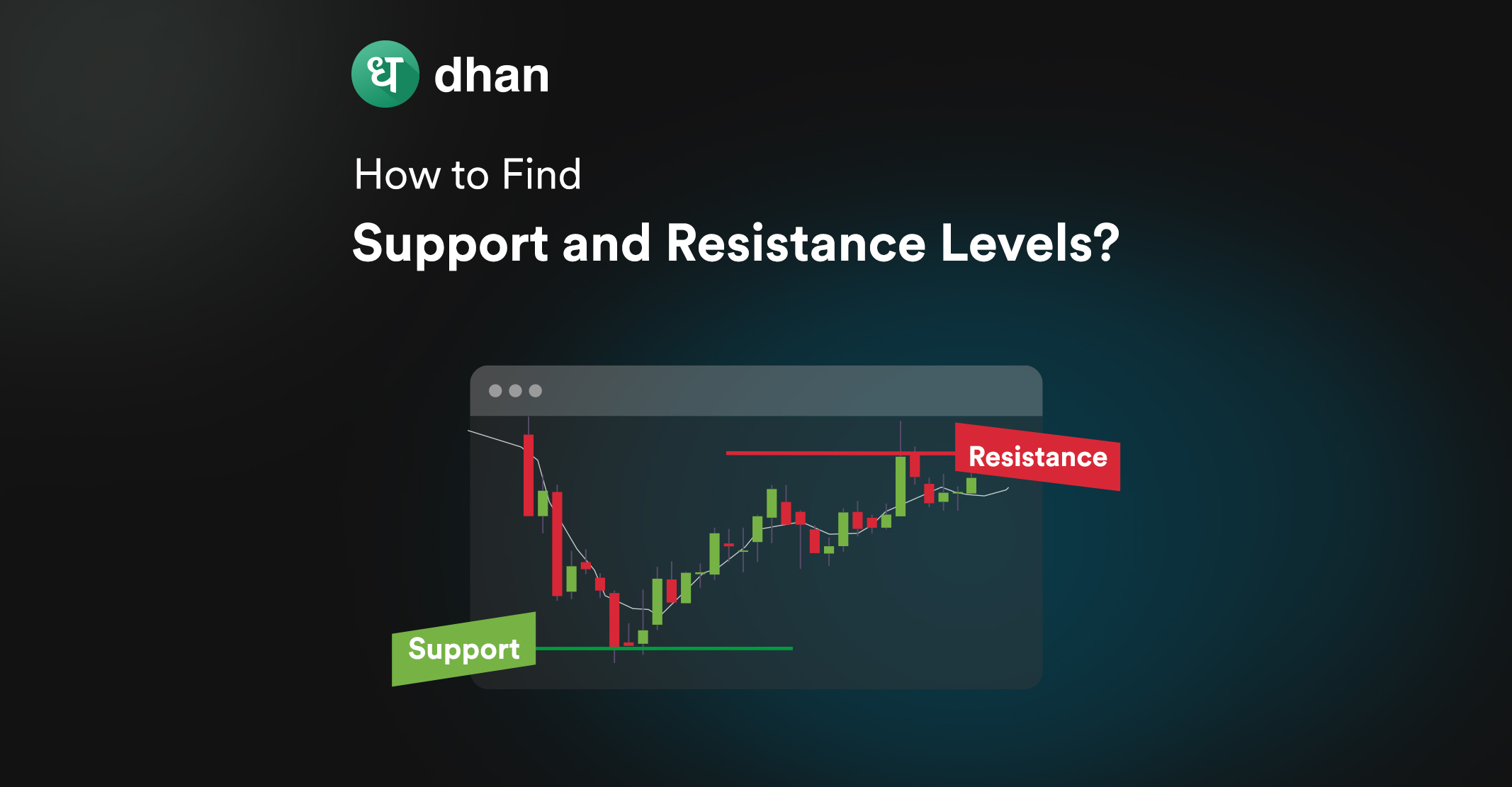You’ve decided to enter the world of swing trading and open your technical chart only to see a ton of timeframes.
Confused, you decide to use a random timeframe and don’t get the right insight into the price movement.
Identifying swings requires you to zoom in on price movements across a specific period that shouldn’t be too long or short.
Choosing the right time frame is key to success in swing trading as it can make or break your strategy. However, which time frame is best for swing trading? The answer is in this blog. Read on to know more!
What are Timeframes?
Timeframes are the specific duration of time over which the price movement of financial instruments is denoted as a series of candlesticks or bars.
Standard timeframes include minutes, hours, days, weeks, or months, reflecting different levels of market activity. The image below shows a 1-hour chart timeframe in action on tv.dhan.co.
A 1-hour timeframe means each candlestick represents one hour of price movement, offering a more detailed view of short-term fluctuations compared to a daily timeframe, where each candlestick represents one day of trading.
Why are Timeframes Important for Swing Trading?
The core premise of swing trading is to identify swings, that is, the up and down movements in price that are a part of a larger trend.
To this end, timeframes are crucial for swing trading as they dictate the duration of trades and influence decision-making.
Shorter timeframes, like daily charts, help identify profit-taking opportunities in volatile markets, while longer timeframes, such as weekly charts, provide a broader perspective for trend analysis.
Choosing the right timeframe should be based on your risk tolerance, goals, and market conditions, optimizing entry and exit points. It helps you as a trader adapt to varying market changes and efficiently implement strategies.
Best Time Frames for Swing Trading
Swing trading rests at the intersection of various trading styles. It’s comparable to delivery trading due to the ideology but at the same time, you’d observe that day traders carry out their daily analysis in similar ways.
The best timeframe for swing trading includes 1-hour, 4-hour, and daily timeframes. Here’s why:
- 1-hour charts: Short enough to give you intraday insights but long enough to help you spot broader swings
- 4-hour charts: A balanced point of view for identifying short-term and medium-term trends
- Daily charts: A broader view of price movements over several days, ideal for identifying long-term trends and swings
Using time frames shorter than 1 hour isn’t very helpful for swing traders because of two reasons.
The first is that you won’t be able to spot the right kind of trends for swing trading. The second is that managing trades on those frames requires more constant attention.
Which Timeframe Should You Choose for Swing Trading?
If one had to choose between 1-hour, 4-hour, and daily timeframes, it would come down to daily timeframe because of the degree to which they reveal the trends required for swing trade like a pro.

Let’s dig deeper into the reasons why the daily timeframe is commonly preferred for swing trading:
1. Reduced Noise
Daily charts have less noise, meaning they display fewer short-term price fluctuations.
This clarity makes it easier for swing traders to identify overall trends and key levels of support and resistance.
With reduced market noise, traders can make more informed decisions and focus on capturing larger, more significant price movements over several days or weeks.
2. Reduced Transaction Costs
Swing traders using daily charts may have lower transaction costs because they hold positions for a day, making fewer trades.
With reduced trading frequency, traders face lower brokerage. This potentially improves overall profitability compared to day traders who execute more frequent transactions on shorter timeframes.
3. Less Time-Consuming
Using daily charts for swing trading is less time-consuming as it allows you to hold positions without the need for constant monitoring.
This longer timeframe reduces stress, providing a more relaxed approach to trading.
On a side note, identifying the best trading timeframe for beginners is very important, regardless of your trading style.
4. Clearer Patterns
Daily charts make it easier to see clear patterns in stock prices. Patterns like trends and reversals are more noticeable because daily charts smooth out short-term market fluctuations.
You can better identify and act on these patterns, helping in effective decision-making for swing trading strategies.
All that said and done, the best timeframe for swing trading is an individual preference and must be chosen carefully as per your convenience, swing trading methodology, and other factors.
Dhan's Community is known for interesting discussions about all things swing trading. Check it out here: https://madefortrade.in/
Conclusion
Swing trading requires you to select a timeframe that sets you up for success. The chosen timeframe should reveal tradeable swings.
That’s why the daily chart timeframe proves beneficial. It offers a balanced view, reduces noise, and enhances trend visibility.
The daily chart provides a clearer picture of market trends and helps traders make informed decisions.
However, you must choose a timeframe that reveals the right swings for your swing trading strategy.
FAQs
Q. Is a 4-hour chart good for swing trading?
The 4-hour chart is a good option for swing trading other than the daily chart. While price action is slightly more random than the daily timeframe, this chart gives you more opportunities to trade, which can increase profitability.
Q. What chart is best for swing trading?
For swing trading, candlestick charts are highly effective as they provide detailed information on price movements, helping you identify trends and potential reversals. Utilize these charts for a comprehensive view of market sentiment over your preferred trading timeframe.
Q. Which pattern is best for swing trading?
The ascending and descending triangles are some of the best patterns for swing trading.
Q. What is the best time frame to trade?
The best time frame for swing trading is daily. You can choose daily charts to find entry and exit points.



